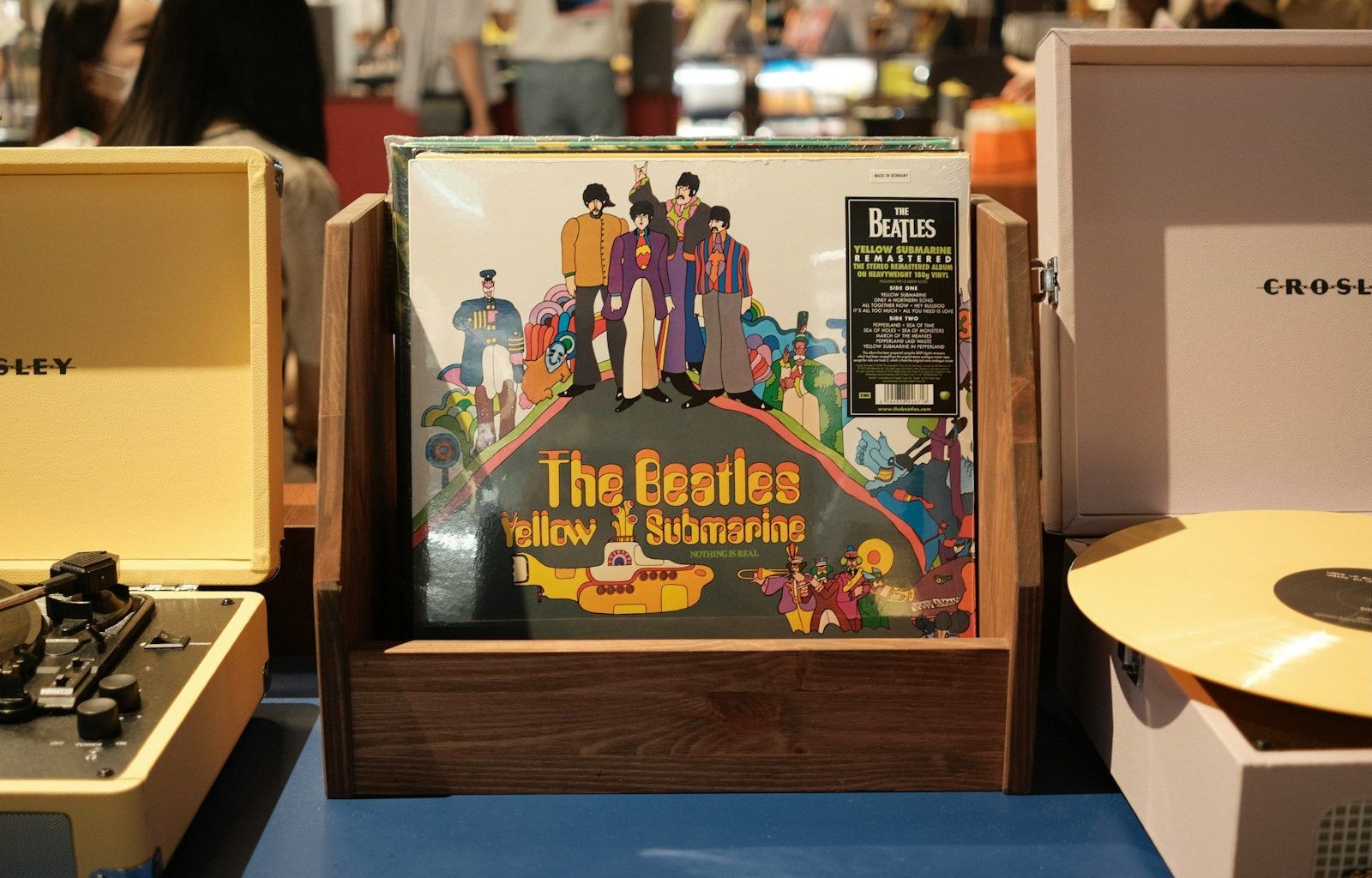When you think about album covers, what comes to mind? Is it the artwork that draws you in, or is it the size and shape of the cover? Album covers are not just about visual appeal—their dimensions play a crucial role in how we perceive music packaging. This blog explores the world of album cover sizes, diving into their history, standards, and how they fit into today’s digital landscape. By the end, you’ll know everything there is to know about the sizes of album covers. Let’s dive in!
The Classic Era of Vinyl Records
Back in the day, vinyl records were the standard medium for music. Their covers had to be large enough to house the record itself, which set the stage for the iconic square format we’ve come to associate with album art. So, how big are album covers for vinyl records?
Standard Dimensions for Vinyl Covers:
- 12-inch records: The covers measure approximately 12.375 x 12.375 inches. This square design was perfect for showcasing intricate artwork, photography, or bold typography.
- 7-inch records (Singles): Smaller than their full-length counterparts, these covers measure around 7 x 7 inches.
Vinyl covers were big enough to make a statement. They allowed artists to create visual masterpieces that complemented their music. It’s no surprise that many collectors treasure these covers as works of art.
The Transition to Cassettes and CDs
As technology advanced, cassettes and CDs replaced vinyl records. With these new formats came smaller, more portable packaging. But how did the dimensions of album covers change?
Cassette Covers:
- Cassette tapes featured covers known as “j-cards,” which typically measured 4 x 2.5 inches. These compact designs often folded out to include lyrics or additional artwork.
CD Covers:
- CD covers are square, like vinyl, but significantly smaller. The standard dimensions are 4.724 x 4.724 inches. While smaller, CD covers maintained the iconic square shape, ensuring continuity in album art design.
The shift to smaller sizes didn’t diminish the importance of album covers. Instead, it challenged designers to make an impact within tighter constraints.
Digital Era: Album Covers Go Virtual
Fast forward to today, and most of us consume music digitally. Streaming platforms like Spotify, Apple Music, and Tidal have redefined how we view album art. But how big are album covers in the digital age?
Digital Album Covers:
- The standard size for digital album covers is 3000 x 3000 pixels. This resolution ensures the artwork looks sharp across devices, from smartphones to desktop screens.
- Platforms often recommend a minimum size of 1400 x 1400 pixels, but higher resolutions are preferred for better quality.
While the physical size of album covers has become less relevant, their digital dimensions are more critical than ever. High-quality images ensure the artwork stands out, even on small screens.
Why Album Cover Size Matters
You might wonder, does size really matter when it comes to album covers? Absolutely! Here’s why:
- Visual Impact: Larger sizes (like vinyl) allow for more detailed artwork, making a stronger visual impression.
- Branding: Album covers are a visual representation of the artist’s brand. Whether physical or digital, their size influences how the artwork is perceived.
- Compatibility: In the digital realm, ensuring the correct dimensions means the artwork displays perfectly on streaming platforms.
Tips for Designing Album Covers
If you’re an artist or designer, understanding album cover sizes is crucial. Here are some tips:
- Know the Standards: Stick to the recommended sizes for your medium, whether it’s vinyl, CD, or digital.
- Optimize for Digital: Ensure your artwork is at least 3000 x 3000 pixels for digital releases.
- Consider the Canvas: Use the available space wisely. For smaller formats like cassettes, focus on bold, simple designs that stand out.
A Look at Iconic Album Covers
Throughout history, some album covers have become as iconic as the music they represent. Think of The Beatles’ “Abbey Road” or Pink Floyd’s “The Dark Side of the Moon.” These covers showcase the power of good design, regardless of size. Whether large vinyl sleeves or small digital thumbnails, they continue to captivate audiences worldwide.
Conclusion
So, how big are album covers? The answer depends on the format—from 12-inch vinyl records to 3000 x 3000-pixel digital art. While the physical dimensions have changed over time, the purpose of album covers remains the same: to visually represent the music and connect with listeners.
As music evolves, so do album covers. Whether you’re a collector, designer, or casual listener, understanding these dimensions adds a new layer of appreciation for the art form. Next time you listen to your favorite album, take a moment to admire its cover—whatever size it may be.
For further reading, explore these related articles:
- How to Pre-Save on Spotify: The Ultimate Guide for Artists
- Friday Music Artist: Your Ultimate Weekend Soundtrack
For additional resources on music marketing and distribution, visit DMT Records Private Limited.






